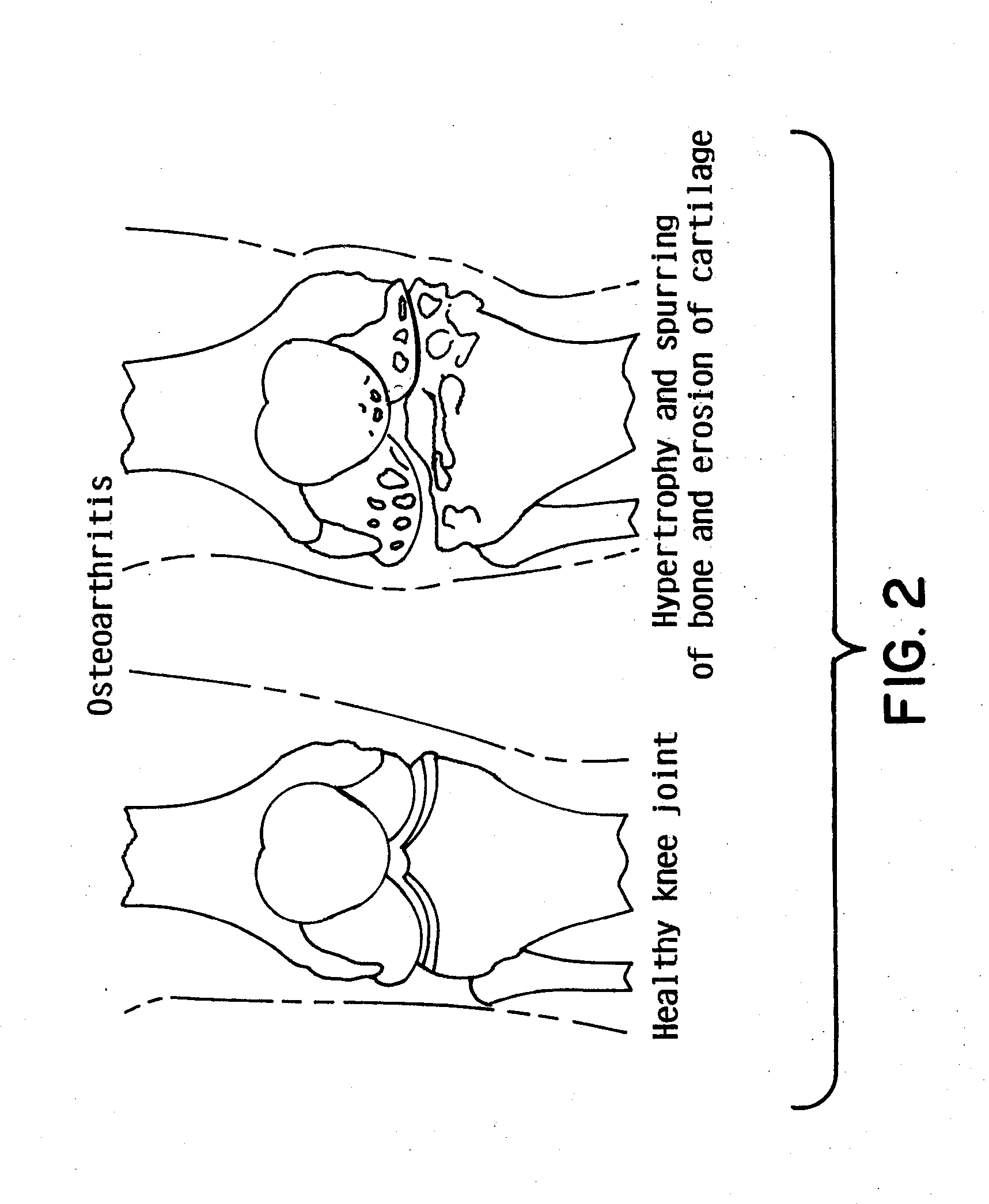Low friction resurfacing implant
a low friction, implantable technology, applied in the field of orthopedic medicine, can solve the problems of degenerative changes, damage to the articular cartilage, and eventually destruction of the joint cartilage and adjacent bone, and achieve the effect of reducing or eliminating joint pain
- Summary
- Abstract
- Description
- Claims
- Application Information
AI Technical Summary
Benefits of technology
Problems solved by technology
Method used
Image
Examples
Embodiment Construction
[0035]The present invention provides an implantable joint prosthesis configured to resurface a natural articular joint, tools, and methods for implantation. The prosthesis may include a first implant component and a second implant component. The first implant component may be implantable on a first bone and may have a first bearing surface. The second implant component may be implantable on a second bone and have a second bearing surface that corresponds to the first bearing surface.
[0036]Each bearing surface may include a flattened section such that when the bearing surfaces are placed in cooperation with one another in a preferred orientation, the flattened sections are aligned. Alternatively, the bearing surfaces may have an asymmetric configuration, with non-congruent surfaces working cooperatively. The implant corrects joint deformity by providing new articulating surfaces. The articulating surfaces restore a low coefficient of friction as well as improved fatigue, wear and loa...
PUM
 Login to View More
Login to View More Abstract
Description
Claims
Application Information
 Login to View More
Login to View More - R&D
- Intellectual Property
- Life Sciences
- Materials
- Tech Scout
- Unparalleled Data Quality
- Higher Quality Content
- 60% Fewer Hallucinations
Browse by: Latest US Patents, China's latest patents, Technical Efficacy Thesaurus, Application Domain, Technology Topic, Popular Technical Reports.
© 2025 PatSnap. All rights reserved.Legal|Privacy policy|Modern Slavery Act Transparency Statement|Sitemap|About US| Contact US: help@patsnap.com



